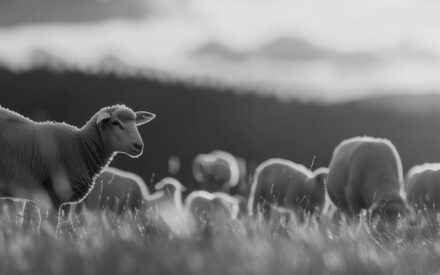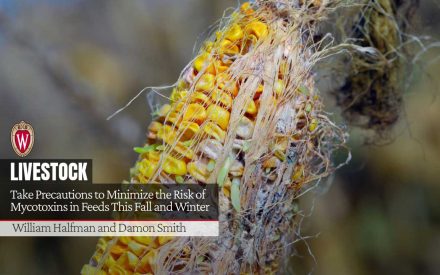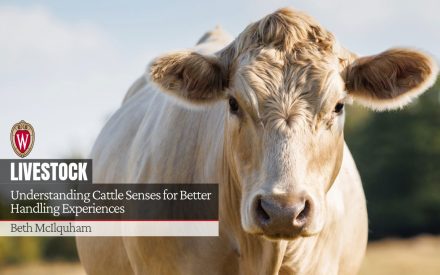For decades, livestock producers have moved animals on and off the farm by way of sale, leasing, renting, and between other facilities or pastures owned by the farm. With these movements comes the risk of the introduction or spread of disease. One way to combat these risks associated with animal movement is practicing good biosecurity on your operation. Biosecurity starts before animals arrive.
The National Beef Quality Assurance (BQA) manual describes biosecurity as management practices that aim to prevent the spread of disease by minimizing the movement of biological organisms such as viruses, bacteria, and parasites within or onto our livestock operations. It is important to maintain lines of separation and incorporate the four pillars of biosecurity; exclusion, isolation, cleanliness, and disinfection.
Lines of Separation
The United States Department of Agriculture (USDA) defines a line of separation as a functional line separating an area where animals are housed from exposure to potential disease sources. The farm’s perimeter can be used to separate on-farm movements from off-farm movements to reduce threats. Keeping visitor logbooks, designating “clean” and “dirty” areas, and posting entry and exit procedures can help maintain your herd’s health.
Within your operation there are also internal lines of separation. A common example is designated separate areas where feed equipment is housed verses equipment used for cleaning livestock pens, lots, etc. Lines of separation can also be used to separate newly acquired animals or those returning from pasture or shows from those who have been on farm for longer periods of time.
Exclusion
One of the most efficient ways to maintain your herd’s overall health and reproductive performance is to maintain health protocols on the herd. Know the health history of source herds and health status of individual animals being considered for purchase. Make sure records of potential new breeding stock indicate that animals have tested negative for transmittable diseases like Johne’s, Bovine Viral Diarrhea Virus, Bovine Leukemia Virus, Bovine Respiratory Syncytial Virus, and many others. Exclude animals that have disease symptoms (respiratory, diarrhea, warts, ringworm) or other health issues. Require the seller to guarantee all breeding stock to be reproductively sound. Consulting your veterinarian and the seller’s veterinarian prior to purchase can help make biosecurity between the buyer and the seller smoother and more reliable.
Exclusion is also maintained by managing human and vehicle access into and around your farm. Post entry and restricted access signs, designate parking areas and travel lanes on your farm and provide boot wash stations. It is difficult to control the movement of dogs, cats, and wildlife, but do what you can to limit their access to your animals. Fencing, keeping spilled feed to a minimum, and proper disposal of animal mortalities can all help reduce livestock’s exposure to wildlife.
Isolation
Receive new or returning animals to your operation into pens that do not allow nose to nose contact with animals already on your farm. Consult with your veterinarian on appropriate times for the isolation of these animals and what to test them for upon arrival. Watch animals daily for symptoms and have treatment protocols ready to promptly treat them when symptoms first arise. If testing was not done, have it done during this isolation period; either cull infected animals or return them to the seller. Make testing prior to purchase a priority. If no tests were done by the previous owners be sure to test them before any comingling.
Keep things clean
Keeping your operation clean is often seen as a time-consuming task. However, keeping your clothes, equipment, waterers, feed throughs and storage areas, clean is just as important as keeping your house clean for your family and guests. Designate and wear farm-specific footwear and clothing, and don’t wear these outside of the operation. Farm footwear should be washable and kept clean. Be sure to thoroughly clean walkways, feed alleys, pens, and other animal contact.
Disinfection
Similar to cleanliness, disinfecting clothes, shoes, and other items used on the farm is often overlooked and sometimes forgotten all together. However, disinfecting your footwear and equipment can be vital in stopping the spread of diseases between newly purchased and returning animals and your existing herd. Use footbaths for new animal arrivals to control the potential spread of heel warts or other bacteria. Wash and disinfect footwear worn between different herds, feed handling areas on your operation and animal isolation areas. Surfaces must be cleaned prior to disinfection, as disinfectants do not work in the presence of organic matter.
Good management practices can reduce the risk of introducing and spreading diseases on your operation. Consult your veterinarian and employees to devise a plan to exclude or control target diseases. Implement and follow strict guidelines to ensure the functionality of your plans. Isolate new or returning animals to prevent the potential spread of disease to other animals on the premises. Take time to clean and disinfect all aspects of your operation including your person, equipment, and facilities. Establish lines of separation inside and outside your operation. Always remember that one ounce of prevention is cheaper than a pound of care.
Resources
Beef Quality Assurance – BQA – manuals. BQA. https://www.bqa.org/Media/BQA/Docs/bqa_manual_final.pdf
Checklist for using a line of separation – aphis.usda.gov. https://www.aphis.usda.gov/publications/animal_health/fsc-birds-checklist-line-of-separation.pdfBiosecurity: Tips on bringing home a new Bull. https://hereford.org/static/files/0214_Biosecurity.pd

 Composting mortalities to improve biosecurity
Composting mortalities to improve biosecurity Biosecurity for bringing home new sheep and goats
Biosecurity for bringing home new sheep and goats Take Precautions to Minimize the Risk of Mycotoxins in Feeds This Fall and Winter
Take Precautions to Minimize the Risk of Mycotoxins in Feeds This Fall and Winter Understanding Cattle Senses for Better Handling Experiences
Understanding Cattle Senses for Better Handling Experiences


